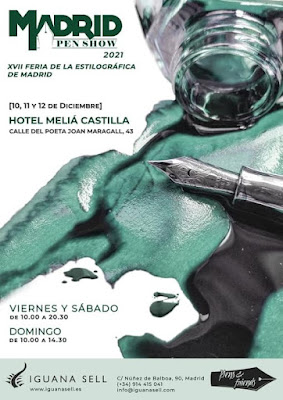 Pens, pens, and pens. Madrid Pen Show 2021.
Pens, pens, and pens. Madrid Pen Show 2021.
On this picture alone there are more pens than in any of the pen shows celebrated in Tokyo. And that is a representation of the differences in philosophies associated to them—Western shows are about pens, pens, and pens. Second hand and vintage pens are the name of the game, and after that you could also find some new pens and some inks and paper.
On the contrary, pen shows in Tokyo –and in other East Asian cities- are about cute things... and some pens, mostly new. Sure enough a couple of traders might be there offering used pens, but their offer pales in comparison to what you can see on a single table in Madrid, as the firs picture showed.
As I have repeatedly said (::1::, ::2::), they are not pen shows but stationary salons where brands and new entrepreneurs show their products. But the formula works and there is no real incentive to change it.
Bottom line—if you were interested in pens go West, paradise is there.
Omas Extra ca. 1940 – Sailor Yama-dori
Bruno Taut
December 17th, 2021
etiquetas: España, Japón, evento, Tokyo, Madrid
Bruno Taut
December 17th, 2021
etiquetas: España, Japón, evento, Tokyo, Madrid


















































